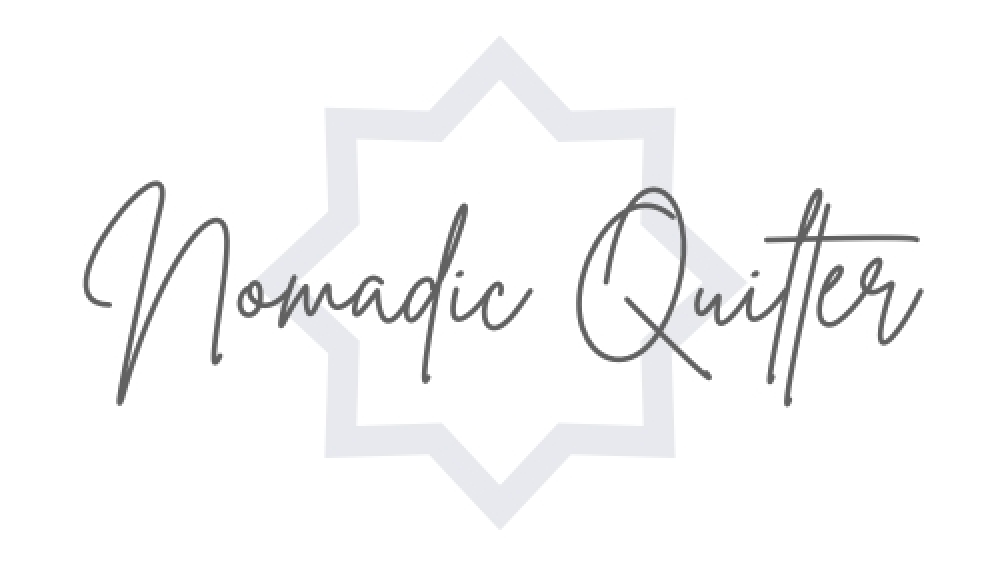Flying geese used to really frustrate me. I could never get the sides trimmed just right. They would usually come out too small by just a tiny bit or my point would be cut off when I sewed them into my quilts. A couple months ago I decided to just work on my flying geese. I read all the tutorials, watched all the videos... then, practiced and practiced. Since several of my quilt patterns have flying geese in them I decided it was time to write up my own "how to".
Flying geese are an essential quilt skill to learn, right after the Half Squared Triangle. One important thing to remember, flying geese are twice as wide as they are high after being sewn into the quilt (this is listed as finished size).
Flying Geese The No Waste Method (Four at a Time)
The No Waste Flying Geese Method is probably the most commonly used method of sewing flying geese. Why? Well, for one, there isn't any waste. Every scrap of material used in this method stays in the flying geese. Secondly, this method allows you to sew flying geese four at a time. That is a big time-saver if you have lots of these to make. The No Waste Flying Geese method is what I struggled with for a while. I couldn't seem to get them to come out just right. However, I made a couple small changes which greatly helped. First, let's talk about how to make No Waste Flying Geese...

The No Waste Flying Geese method is the most popular among quilters because it's faster, especially if your quilt requires lots of Flying Geese. I prefer to make my Flying Geese slightly larger than needed so that I can trim them down to the needed size. This allows for them to be easily pieced into the blocks or quilt. It also helps keep the crisp point on the end.
One trick I learned is to slightly bring in the smaller squares away from the corners when pinning in place. This helps get a full 1/4 in. where the point is when trimming.

Also, if your seam is a 1/4 in. it should come out right at the crests of the small M shape where the fabrics meet. See image below.

Trimming Those Geese

How you trim your Flying Geese is just as important as how you sew them. I was not loving trimming Flying Geese with a straight ruler. I am usually all about not buying extra supplies if you don't need them. But in this case I decided I wanted to make trimming Flying Geese easier and I was willing to pay a bit.
Enter the Wing Clipper! I found this trimming tool on the Fat Quarter Shop in a moment of frustration. I realized I was trying to trim the size of the Flying Geese into the finished size. The finished size is the size it will be once sewn into the quilt. I was thinking that was the size it would be after being trimmed. Big misunderstanding!
I bought the Wing Clipper to help make sure I was trimming correctly and my "V" shape was being sewn correctly. It has made trimming Flying Geese go much faster and more accurate. There are two different Wing Clipper rulers. I have the first one. They each trim to different measurements. But after my basic rulers this is my most frequently used ruler. It has been worth every penny.
Let's go over how to trim with a straight edge ruler...
- In this case we am trimming to 2 1/2 in. x 4 1/2 in. So line up the straight edge ruler so the Flying Geese fits in those measurements. Make sure the point of the Flying Geese and the bottom of the unit fits in between the 2 1/4 in. and 2 1/2 in. line on the ruler. See image below.

- Trim off the right side and the top. You are just cleaning up the edges and straightening them so there shouldn't be a lot to trim.
- Flip the ruler and trim the other two sides again making sure to keep the 1/4 inch of white fabric between the point and the edge of the unit. See image below.

The below Flying Geese has been trimmed and notice how the top points hit right in the corners.

I encourage you, if you are struggling with a certain block or skill in quilting to take the time to master it. I am so glad I did! My Flying Geese are consistent and I have less frustration.
Let me know if you have any questions or extra tips for sewing Flying Geese... because we quilters need to help each out. :)
This blogpost may contain affiliate links from which I may receive a percentage of purchases made through the link.
My Patterns which use the No Waste Flying Geese Method:
